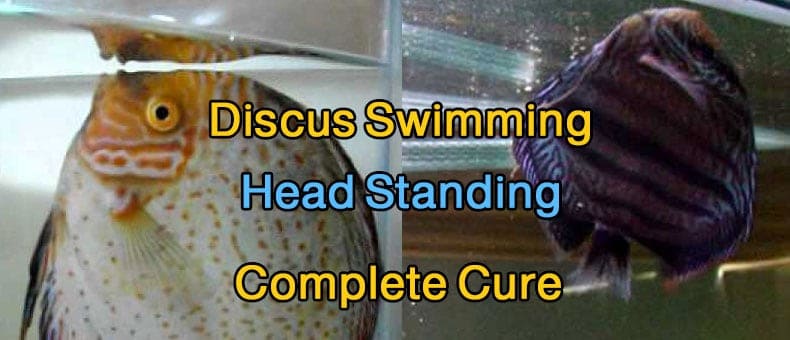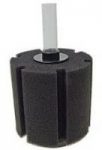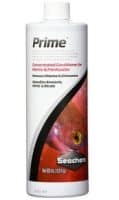
The reason why Discus is swimming head standing is that it is suffering either from a condition known as Swim Bladder disorder, a health case in which Discus is unable to regulate the amount of air that goes in and out of its swim bladder, or as an indication of nitrite poisoning.
Table of Contents
Discus Swim Bladder Disorder
Swim bladder disorder is a health condition in which the swim bladder of a Discus is unable to serve its purpose as a result of an ailment, physiological defects, the nature of the environment in which the Discus resides.
Symptoms Of Swim Bladder Disorder
There are a number of symptoms that you will notice in the Discus for you to know that it is suffering from a swim bladder disease, and most of it will revolve around its ability to order its floating and sinking in the water. The particular symptoms include:
- Floating in a slanted manner.
- Floating in an inverted manner (head standing).
- Discus becomes unable to dive.
- Discus is unable to reach the surface of the water.
- Distended belly.
- Curved back.
- Loss of appetite.
Swim Bladder Details And Causes
If you notice that Discus is swimming on its side (that is, Discus is swimming slanted), it is a pointer to you that it is suffering from the swim bladder disease. As a result of this ailment, Discus will not be able to control the air that goes in and then out of its swim bladder, and this will make the fish begin to swim in a slanted posture or with its tail up (that is, swimming head standing) because it is inverted. Despite the fact that swim bladder disorder is a health condition in Discus, it is, in essence, a symptom that can arise as a result of various reasons. So, whenever it appears as if your Discus has a swim bladder disorder, it will do you well to consult your veterinarian or a specialist in aquatic care as it turns out that nonprescription medication can prove effective in treating the disease.
The reason Discus is likely to have a swim bladder disorder or disease is most of the time because of the contraction of the swim bladder. When the Discus ends up having a belly that is distended as a result of eating apace or maybe eating too much, constipation, or taking in too much air which could come about due to the fact that the Discus is trying to eat food that is floating on the surface of the water; contractions are very likely to develop in the swim bladder of the Discus. Furthermore, when fed with freeze-dried or dry flake food that ultimately expands when they get wet, Discus is most certainly going to have a stomach or intestinal tract that is puffed-up or inflated, which could lead to a swim bladder disorder.
- If the temperature of the water is low, the digestive process in the Discus will become very slow, and that will bring about the inflation of the gastrointestinal tract in the Discus and eventually apply pressure on its swim bladder.
- The swim bladder could also be affected as a result of the bloating of the other abdominal organs. More so, the swim bladder could be affected as an aftereffect of cysts developing in the kidney, deposits of fat in the liver, or egg binding in female species.
- A parasite or even an infection with a bacterial origin could enlarge the swim bladder. Sometimes when Discus hits itself against an object in the tank or engages in a fight, the swim bladder could be damaged.
- It is usually hard to find fish that have defects they were born with, but swim bladder disorders can be hereditary, and if a young Discus has it, it will be noticed at an early period.
How To Treat Swim Bladder
Peas Method
- If the swim bladder disorder is determined to be a result of a swollen stomach or intestine, it is recommended that the fish should not be fed for 3 days. During this period, water temperature in the tank should be kept between 80ºF and 84ºF.
- Then on the fourth day, Discus should be fed with skinned pea that has been cooked.
The ideal feed would be frozen peas prepared as below:
- Boil the peas for a couple of seconds to soften them a bit.
- Remove the skin and then feed the pea to the Discus.
- Continue feeding the Discus with one pea per day for some days before changing to normal feeds.
Epsom Salt Method
Add Epsom salt to the tank at a level of 1 Tablespoon per 40 Gallons.
Other kinds of treatment:
- Keeping water clean and at a temperature of 82F to 86F.
- Reduce the level of the water in the tank to allow the Discus to move easily within it.
- For tanks with a strong current, reduce the water flow.
- Consider feeding the Discus by hand if it can barely move.
How To Prevent Swim Bladder Infection
- The poor condition of the water a fish is in will very likely cause diseases. Keep the tank clean and try to change the water in the tank as often as possible to prevent discus swim bladder disorder.
- Ensure that the temperature of the water is a bit high. Doing this will help digestion a great deal and prevent constipation.
- Discus feed should be top-notch and not low-grade, use sinking feed.
- Ensure that you do not overfeed the discus, feed small portions, and try to check the total amount of feed in a week.
- If you are suspicious of any health issue, consult the vet or aquatic care specialist to take a look and run some tests.
Nitrite Poisoning
Nitrite poisoning is a condition that makes discus lean over or lean against a rock, wood, the side of a tank, or some other substance in the water as a result of a loss of balance. Also, when your Discus is breathing heavily, there’s a chance it is suffering from nitrite poisoning.
Symptoms Of Nitrite Poisoning
- Rapid breathing.
- Lethargy.
- Gasping for air at the surface.
- Staying near the filter outlet.
Nitrite Poisoning Details And Causes
Nitrite levels in the water will undoubtedly be absorbed by your discus regardless of what you do. When these nitrites get to the bloodstream of your discus, the blood in the fish will be unable to carry oxygen.
Once the nitrites become too much for the discus to handle, the fish will suffocate. It does not matter how much oxygen is contained in the water, discus will still suffocate as a result of the nitrites. This is what is referred to as nitrite poisoning.
Some of the causes of nitrites include:
- Overfeeding.
- Sudden waste buildup.
- Absence of nitrifying bacteria in the filter.
- Weak filtration.
- Overstocked aquarium.
How To Treat Nitrite Poisoning
[STEP1] – Change Water
When you have confirmed that there are nitrites in the tank, you should change about 30 to 50 percent of the water. This removes the water filled with nitrites and replaces it with water that is free of nitrites.
[STEP2] – Add Cycled Filters

Bacteria turn nitrites into nitrates that cause less harm. If these bacteria are much in the water, they will eat up the nitrites immediately after being produced. These bacteria are in large numbers in the filter of a cycled tank.
Add a filter from a cycled tank into the aquarium or tank containing the Discus so that the bacteria can eat up the nitrites.
[STEP3] – Water Conditioner
This is a chemical developed to remove nitrites. Follow the instructions on the bottle label, and you will kill the nitrites in the tank. Nitrites are held fast with water conditioners, thereby making them nontoxic to discus and, by so doing, offer filter bacteria the chance to turn the nitrites into nitrates.

How To Prevent Nitrite Poisoning
- Avoid giving your discus too much food. When they eat too much, they excrete, and nitrites are developed faster from excreta. Furthermore, food that your discus is unable to eat sinks to the bottom of the tank and rots, and from it, more nitrites can develop.
- Prune the leaves of plants and remove dead or dying plants in the tank. If there are plants in the tank where you keep your Discus, you will need to perform a kind of subaquatic gardening. If the plants get old and die, they will decay and increase the nitrite level in the tank.
- Clean your filter. The excreta, food leftovers, and dead plants will build up in due time. When you clean your filter often, you will regulate the buildup of waste. You can also use an intake sponge filter; the sponge traps the muck in the water before it reaches the filter, after which you remove the sponge and have it cleaned.
- Use a gravel vac to remove rotten food, decaying plants, and excreta from your tank if it has a substrate.
- If the discus in a tank seems to be too much, you could either buy a new larger tank or reduce the amount of Discus in your current tank.
Conclusion
Discus swimming head standing or with its nose down and its tail up is as a result of a disorder that is affecting its swim bladder organ or a result of water nitrite poisoning.
Swim bladder disorder can make discus began to swim upside down or swim slanted. It can be caused by overfeeding. To treat swim bladder, you will need to put Discus on a diet.
Nitrite poisoning is a condition that makes discus lose balance and tend to lean against substances in a tank; it can lead to suffocation of the discus. It can be treated by changing the water, killing the nitrites with bacteria, or adding Seachem Prime.


Do you want to cook your fish or stick it in hot lava then? “During this period, water temperature in the tank should be kept between 700F and 800F.”
Loool Martha,
you are absolutely right, the issue was a typo, the other 0 supposed to be the small degree centigrade symbol, I have fixed it thanks anyway for notifying me 🙏